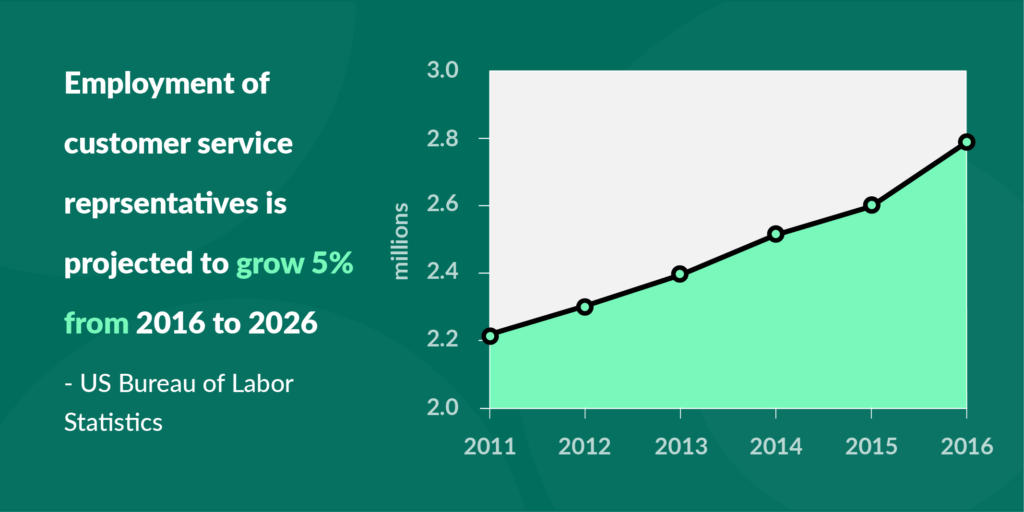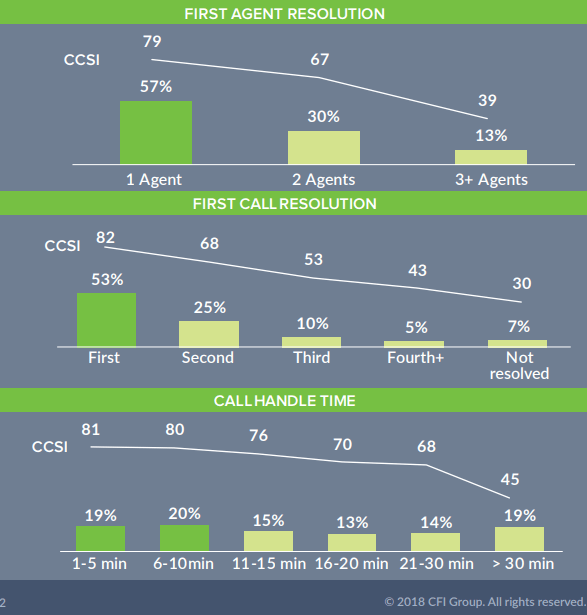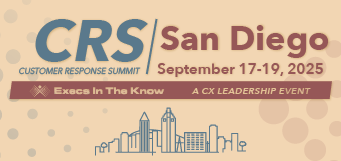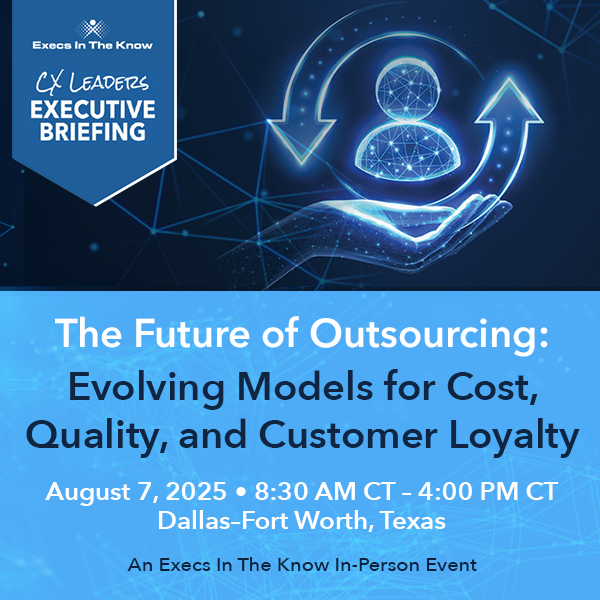This is a guest post from AmplifAI’s Customer Success Officer, Melissa Pollock. Visit AmplifAI’s website to learn more about how the company.
“The secret to success is good leadership, and good leadership is all about making the lives of your team members or workers better.” – Tony Dungy, NFL Coach
We hire them. We ask them to do a job. A very, very important job. But the core responsibilities of frontline Contact Center Sales and Service roles have become increasingly more involved, the number of applications and subsequent need for multi-tasking has continued to deepen, and the volume and level of skills required to successfully manage customer interactions have drastically expanded.
As we struggle to keep up with customers’ communication and service demands, contact center technologies and evolving operations processes, our Agents struggle to adapt and grow as well. Understanding how these changes are impacting our frontline employees’ jobs and expectations is essential to proactively providing what they need in order to learn and perform the tasks we’ve hired them to fulfill. As leaders we not only affect their practical and cognitive capabilities, in terms of tools and training, but also their psychological willingness, desires and confidence!
5 Trends Changing the Contact Center
Looking at our industry, there are five clear trends that have, and continue to evolve our operational realities. We have to acknowledge and plan for how they affect our frontline Customer Service and Sales teams’ ability to engage, learn and perform. If you’re already aware and on top of these things, terrific and well done! If not, start some conversations around how you can integrate planning for these trends into your 2019 strategies for frontline performance management!
1. Hiring Growth, Not Decline
First of all, it’s important to note that frontline Customer Service jobs have been on the rise for the last six years, AND, the U.S. Bureau of Labor Statistics projects that growth to continue by another 5% over the next 10 years. AI isn’t eliminating customer service roles, it’s simply changing them, evolving what is handled by machine, and what is handled by humans, and what is handled through a blend of Human+AI.

2. Live Agents still drive CSAT
CFI Group’s 2018 Contact Center Satisfaction Index report states that live Agents still drive customer satisfaction, because Voice is still 79% of channel volume. Furthermore, the survey results clearly show that the faster the call is handled, by the first agent, on the first call, the higher the customer satisfaction ratings.
With ongoing job growth, and customers’ reigning preference for voice channels, we need highly-skilled, empathetic, articulate, and efficient Agents! AND, we have to equip them with tools and resources that are easy to access, easy to use, and that give them the data and answers they need, quickly!
3. Increasing Job Complexity
With all the new tools and resources that have come available in the last decade – from cloud-based CRM and Contact Center Applications, to Intelligent IVR’s, Chatbots, and Omni-channel Communications Platforms – technology is playing a HUGE part in modernizing our operations and improving the insight available to our teams, and the service available to our customers.
New tools and technologies also continue to increase the number of applications and processes Agents must integrate into their daily workflow. As a result, we have to specifically consider the effects of new tools and processes on Agent workflow during the planning, roll-out and training phases. Consider asking:
- What Agent-level processes will be affected?
- What Supervisor-level processes will be affected?
- Who will redesign the process(es) to align with the new tool/capabilities?
- Who will communicate and train the revised/new workflow?
- Who will inspect use of the revised/new workflow and tools?
- How will you collect input on the accuracy and effectiveness of the workflow in use?
- Who will communicate and train any adjustments to the workflow?
These considerations are important to ensure Agents are equipped to use the new tools and procedures in ways that add value to customer interactions, not road blocks!
CFI Group states; “The challenge is not with making the tools available; it is with making access to those tools effortless and simple for the customer.” I add, even more importantly, effortless and simple for our Agents!
4. Automation Elevates Skill Requirements
Beyond new tools, emerging tech like Artificial Intelligence (AI), Machine Learning (ML), Natural Language Processing (NLP), Robotic Process Automation (RPA) and IA (Intelligent Automation) are driving semi-automation of certain functions with the Contact Center – from finding trends in WFM data, to profiling customer history and providing cross-selling suggestions, to analyzing customer sentiment, to answering basic customer inquiries, to pushing personalized learning content directly to Agents, to telling supervisors who to coach or recognize.
These automations are taking on the simple, the rote, and the repetitious – all with the intent of freeing up Agents to perform the more complex and uniquely ‘human’ work. They’re making possible a smart divination of duties between man and machine, and in some scenarios a blended-handling or co-facilitation of the customer experience. Either way, the new normal is that Agents need to tap into a broader interpersonal skill set, and a deeper knowledge of product and service portfolios and problem-solving. To that end, we have to re-imagine the learner experience – integrate new customer use cases, tool, and workflow examples in on-boarding and training, along with leveraging new methods for training transfer and practice.

5. Expectations for Consumer-like Learning
The Information Age and subsequent Digital Transformation of everything have made a substantial impact on personal learning – nearly all of us consume content on-demand, in-the-moment, from any number of devices, and across multiple media outlets. In a few clicks, we have access to an article or a video that demonstrates how to do most anything!
Now look at our organizational learning; while we are evolving into less formal, more digital, and more flexible learning opportunities, there is still a great majority of learning that must be done off work, offline (away from or outside of our natural workflow), and that is largely generic, i.e., applicable to a target role and its common skill requirements.
Where and how we access content, as well as the style and length of that content, determines whether that learning is engaging, relevant and useful for modern learners. (And while perhaps initially driven by Millennials and Work-At-Home Agents (W@HAs), ‘modern learner’ now includes anyone using smart-device technology in their personal lives!)
The digital-consumer Agent appreciates and expects the efficiency and engagement of shorter, more individually relevant, and more readily available self-learning, self-coaching, and self-development opportunities. So, as we are deploying new technologies and processes for improving customer experiences, we also need to look at learning and performance management platforms that are driving improved employee experiences!
The Future of Success in Contact Centers:
I love this quote from Shep Hyken, because I believe it holds the same truth for Agents: “True loyalty doesn’t come because of an app. It doesn’t come because you have a punch card where after ten punches you get a free sandwich. It is about the relationship. Take away those ‘perks’ and would the customer still be loyal?”
So, no, it isn’t pizza or gift-cards. The key to success in the contact center of the future, is to engage and empower in ways that are enabled by technology, but driven and supported by humans.
It’s making it easy to access tools and training, do work, see performance, learn and build skills, compare to peers, optimize incentives, plan career development, and share learnings and experiences!
Related Resources:
- 5 Ways Leaders Can Model High-CX Behaviors
- 3 Ways to Drive Effortless Employee Learning Experiences
- WFO: A Systems Thinking Activity
Melissa and the AmplifAI crew will share their expertise at Customer Response Summit New Orleans (Feb. 4-6, 2019). Stop by our Innovations Lab to see their results-driven solutions in action.











